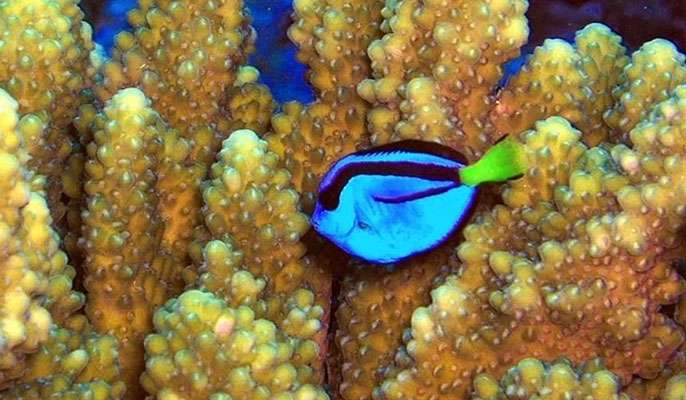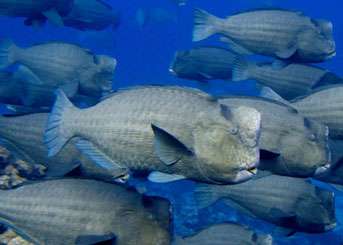An adult palette surgeonfish (Paracanthurus hepatic). These fish, seen in "Finding Nemo," play a vital role in keeping coral reefs healthy by grazing plant biomass that might otherwise take over.
Coral reefs provide protection for islands, billions of dollars in economic value, and a dazzling array of biodiversity. Keeping reefs healthy is an important job, and one particular group of herbivorous fish and invertebrates is responsible for it.
Assistant professor at UC San Diego's Scripps Institution of Oceanography Jennifer Smith is the first to do a global survey of these species—the ones she calls "lawnmowers."
"If you take away the lawnmower or the weedwackers in your own yard you know what happens, you get the weeds growing," explains Smith. "The same thing happens on a coral reef where if you don't have the lawnmowers, these weeds can overgrow and outcompete the corals which are the ecosystem engineers."
Unfortunately, the fish that tend the reef by consuming plant biomass are often prized food sources for humans. When they are overfished, other species like territorial damsel fish move in that actually promote seaweed growth and hurt coral.
These seaweed-cultivating "gardeners," as Smith calls them, aren't fisheries targets, so their negative effect on coral reef health is amplified.
Significantly, her latest study finds that weakened reefs are much more easily devastated by climate change phenomena like coral reef bleaching—while those in remote areas, teeming with "lawnmowers," still thrive.
With this compelling evidence, Smith aims to help coral reef managers around the world set conservation goals so these fish are able to keep these delicate ecosystems intact.
Bumphead parrotfish are one of the largest coral reef plant eaters, or "lawnmowers." Credit: UC San Diego
Provided by University of California - San Diego
























